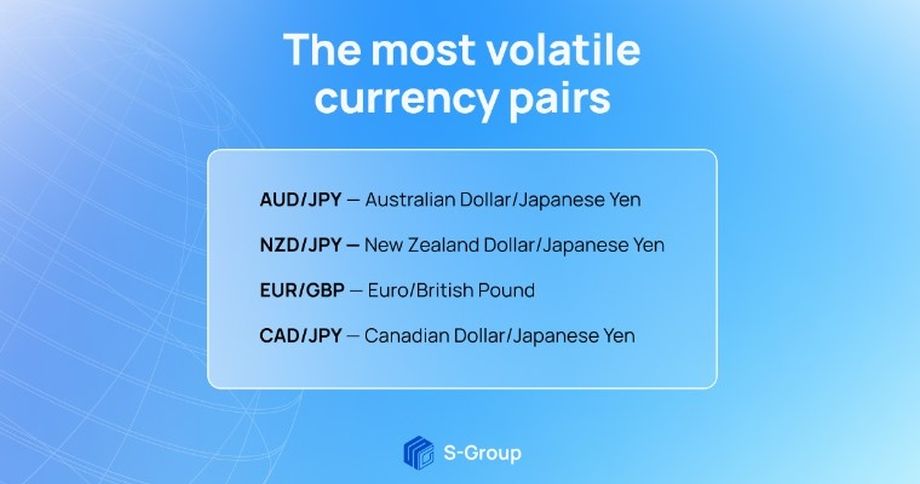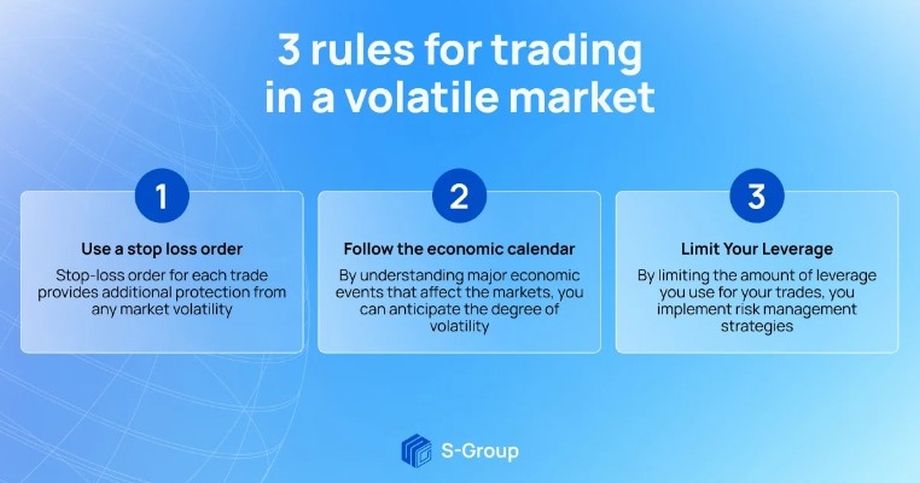What is volatility on the currency market
Volatility refers to market fluctuations in exchange rates, which can be an important aid to a trader in the foreign exchange market.
In order to trade successfully, it is important to understand what volatility is and how to use it and make it work in your favor. Our new article is devoted to the answers to these questions.
The notion of volatility on the currency market
Volatility is an indicator of volatility of exchange rates in a certain period of time. If a currency pair’s rate changes within the expected range, the volatility is considered low, and if there is a sharp upward jump — the volatility is high. For example, a currency pair that fluctuates in the range of 5-10 pips is less volatile than a currency pair that fluctuates in the range of 50-100 pips.
The volatility index is directly related to liquidity — the ability to sell/buy an asset without significant changes in the market. For example, you can make a deal to buy EUR/USD for any amount without any difficulty.
Therefore, the more liquid an instrument is, the lower its volatility. It takes much longer to move the exchange rate in a certain direction. It would take a very large transaction to move the U.S. bond market or the EUR/USD currency pair significantly.
Why is volatility important in markets, and what affects it?
Volatility is an integral part of trading in the foreign exchange market. Lack of volatility means no price movement, without which no trading activity is possible. Moreover, in spite of the fact that the most volatile assets are considered the most risky, they are the most profitable. The reason is that the biggest profit can be made exactly on the big price difference.
For instance, you bought an asset whose price moved up 200 pips in one day and then the next day it moved up 50 pips. As a result, you have earned more by selling the asset you bought on the first day because of the high volatility. But, it is important to remember that high volatility can earn you money as well as lose it.
A large number of factors can affect the degree of price volatility: the geopolitical and economic situation, the monetary situation, traders and market sentiment.
Wars, revolts, riots, economic crisis — all these factors influence the volatility of the currency market. Positive news can trigger short-term growth in currencies, while negative news can lead to decline.
In addition, the movement of the market is controlled by the people behind it. Traders and investors around the world make markets move. And depending on the prevailing sentiment — positive or negative — market volatility can fluctuate.
The most volatile currency pairs
Depending on the trading strategy chosen, an investor needs to understand which assets to form an investment portfolio from. Check out some of the most volatile pairs below to understand the assets‘ ability to fluctuate.
AUD/JPY
The Australian dollar and Japanese yen currency pair is considered one of the most highly correlated pairs to price movements.
The Australian dollar is a commodity currency whose price depends on the value and volume of Australian exports, including minerals, metals, and other commodities.
The Japanese yen is a more relaxed currency and therefore trades the most in times of economic uncertainty.
NZD/JPY
The currency pair of the New Zealand dollar and the Japanese yen is particularly susceptible to fluctuations in general market sentiment trends.
The New Zealand dollar, as well as the Australian dollar is a commodity currency. Its value depends on New Zealand’s agricultural exports. Therefore, even a slight change in exports of New Zealand affects the value of the New Zealand dollar against the Japanese yen.
EUR/GBP
The EUR/GBP currency pair is often volatile and trades the most as it represents the union of the two major European economies: the EU and the UK.
CAD/JPY
The Canadian dollar and Japanese yen currency pair has historically had higher returns, but it is also more sensitive to any changes that occur in the market. In contrast to the pair USD/JPY, which is considered a strong substitute pair, CAD/JPY.
How to trade on a volatile market
Knowing the intrinsic nature of volatility and its underlying factors, you can use it to your advantage.
Use Stop Loss: If you set a stop loss level for every trade in the forex market, you give yourself extra protection against any market volatility.
Follow the economic calendar: If you follow the economic calendar and know the major economic events and decisions that can affect the markets, you can anticipate the degree of volatility.
Limit your leverage: this can increase not only your wins, but also your losses. By limiting the amount of leverage you use for your trades, you implement some risk management strategies.
Trading volatile currency pairs gives an investor the opportunity to make a profit. But experienced investors advise against taking risks if you can’t afford it. It is advisable to make sure that you have the necessary risk management tools to protect yourself from losses.


